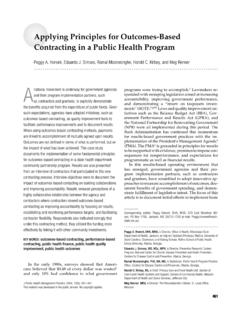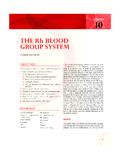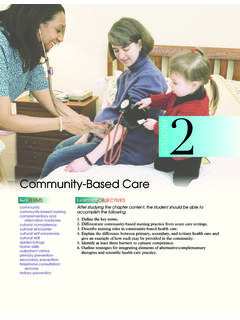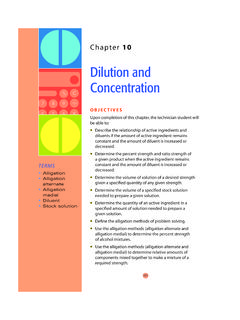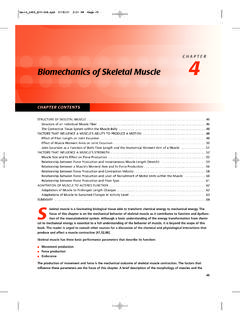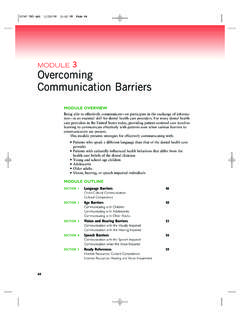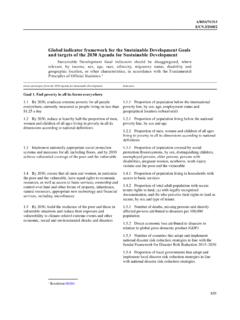Transcription of Nursing Care of a Newborn and Family
1 CHAPTER 24 Nursing Care of a Newborn and FamilyObjectivesAfter mastering the contents of this chapter, you should be able to:Key Termsacrocyanosiscaput succeda-neumcavernous hemangiomacentral cyanosiscephal-hematomaconductionconvect ionerythema toxicumevaporationhemangiomajaundicekang aroo carekernicteruslanugomeconiummiliamongol ian the normalcharacteristics of a a Newborn for normalgrowth and Nursing diagnosesrelated to a Newborn or thefamily of a expected outcomes fora Newborn and Family duringthe first 4 weeks of Nursing care to augmentnormal development of anewborn, such as ways to aidparent child Nursing care of anormal Newborn , such asadministering a first bath orinstructing parents on how tocare for their expected outcomesto determine effectiveness ofnursing care and National Health Goalsrelated to newborns that nursescould help the nation areas related tonewborn assessment and carethat could benefit fromadditional Nursing research orapplication of critical thinking to analyzeways that the care of a termnewborn can be more knowledge ofnewborn growth anddevelopment and immediatecare needs with the nursingprocess to achieve qualitymaternal and child healthnursing you ve studied this chapter, access the accompanying website.
2 Read thepatient scenario and answer the questions to further sharpen your skills, growmore familiar with RN-CLEX types of questions, and reward yourself with howmuch you have Ruiz has just given birth to her second child, a 6-lb, 5-ozbaby girl she named Beth. Newborn Apgar scores at 1 and 5 minuteswere 6 and 8. Vital signs are: temperature (axillary), F( C); heart rate, 136 bpm; respirations, 74 breaths per is inches long, with a head circumference of 34 cm and achest circumference of 32 cm. She has a small port-wine birthmark onher right Jose, Carlotta s husband, is in the room, Carlotta tells youshe is a veteran at baby care. Jose adds, Little Joe [their 3-year-old]will be so excited to see his new sister. That s all he s been talking aboutlately. When Carlotta is alone, you notice she seems a little apprehensiveabout caring for her new daughter. She tells you, She s so much smallerthan Joe was. And why does it sound like she has a cold? And what isthis rash all over her?
3 Isn t it bad enough she has a birthmark? Previous chapters described the care of the pregnantwoman and Family during the antepartal, intrapartal, andpostpartal periods. This chapter adds information aboutcaring for a Newborn and Family to your knowledge Carlotta know as much about newborns as she thought? Whatadditional teaching does this Family need?natal teethneonatalperiodneonatenevusflammeusp hysiologicjaundicepseudomen-struationrad iationstrawberryheman-giomasubconjunc-ti valhem-orrhagethrushtransitionalstoolver nixcaseosa ewborns undergo profound physiologic changes atthe moment of birth (and, probably, psychologicalchanges as well), as they are released from a warm,snug, dark, liquid-filled environment that has met all oftheir basic needs, into a chilly, unbounded, brightly lit,gravity-based, outside minutes after being plunged into this strangeenvironment, a Newborn s body must initiate respirationsand accommodate a circulatory system to extrauterineoxygenation.
4 Within 24 hours, neurologic, renal, endo-crine, gastrointestinal, and metabolic functions must beoperating competently for life to be well a Newborn makes these major adjustmentsdepends on his or her genetic composition, the compe-tency of the recent intrauterine environment, the care re-ceived during the labor and birth period, and the carereceived during the Newborn or neonatal period(frombirth through the first 28 days of life). National HealthGoals related to the first days of life are shown in Box can play a major role in achieving these thirds of all deaths that occur during the first yearof life occur in the neonatal period. More than half occurin the first 24 hours after birth an indication of howhazardous this time is for an infant . Close observation ofa Newborn for indications of distress is essential duringthis period (National Center for Health Statistics, 2005). Nursing Process OverviewFor Health Promotion of the Term NewbornlAssessmentAssessment of a Newborn or neonate(a baby in theneonatal period) includes a review of the mother spregnancy history; physical examination of the infant ;analysis of laboratory reports such as hematocrit andblood type, if indicated; and assessment of parent childinteraction for the beginning of bonding.
5 Assessmentbegins immediately after birth and is continued at everycontact during a Newborn s hospital or birthing centerstay, early home visits, and well-baby visits. Teachingparents to make assessments concerning their infant stemperature, respiratory rate, and overall health is cru-cial so that they can continue to monitor their infant shealth at home (Box ).lNursing DiagnosisNursing diagnoses associated with a Newborn oftencenter on the problems of establishing respirations,beginning nutrition, and assisting with parent newbornbonding. Examples are the following: Ineffective airway clearance related to mucus in airway Ineffective thermoregulation related to heat loss fromexposure in birthing roomUNIT 5 The Nursing Role in Caring for the Family During the Postpartal Period680 NNLength:46 to54 cmHead circumference:34 to 35 cmChest circumference:32 to 33 cmHeart rate:120 to 140 bpmRespirations:30 to 60 breathsper to to F axillaryBOX FOCUS ON ..NATIONAL HEALTH GOALSNATIONAL HEALTH GOALSA number of National Health Goals deal directlywith the Newborn period (DHHS, 2000): Increase to at least 75% the proportion of motherswho breast-feed their babies in the early postpartalperiod, from a baseline of 64%.
6 Increase to at least 50% the proportion of womenwho continue breast-feeding until their babies are 5 to 6 months old, from a baseline of 29%. Increase to 70% the percentage of healthy full-terminfants who are put to sleep on their backs, from abaseline of 35%. Increase to at least 75% the proportion of parentsand caregivers who use feeding practices thatprevent baby-bottle tooth decay. Reduce the neonatal mortality rate to no more per 1,000 live births, from a baseline of per1,000 live can help the nation achieve these goals, byencouraging women not only to begin breast-feedingbut also to continue it through the first 6 months of life;by advising parents on the advantage of placing infantson their backs to sleep and on the danger of toothdecay from letting a baby drink from a bottle of milk orjuice while falling asleep; and by discussing with parentswho use formula the proper methods for preparation sothat gastrointestinal illness does not that could benefit from additional nursingresearch include identifying the reasons why somewomen end breast-feeding shortly after dischargefrom a health care agency and investigating commonmethods of encouraging sleep in infants other than bya the Average Newborn Imbalanced nutrition, less than body requirements,related to poor sucking reflex Readiness for enhanced Family coping related to birthof planned infant Health-seeking behaviors related to Newborn needsIf a minor deviation from the normal is present, such asa hemangioma, a diagnosis such as Parental fear re-lated to hemangioma on left thigh of Newborn mightbe Identification and PlanningPlanning Nursing care should take into account both thenewborn s needs during this transition period and themother s need for adequate rest during the postpartalperiod.
7 Try to adapt teaching time to the schedules ofthe mother and her Newborn . Although the womanmust learn as much as possible about Newborn care,she also must go home from the health care settingwith enough energy to practice what she has planning measures for newborns includehelping them regulate their temperature and helpingthem grow accustomed to breast- or major portion of implementation in the Newborn pe-riod is role modeling to help new parents grow confi-dent with their Newborn . Be aware how closely parentsobserve you for guidance in Newborn care. Conservingnewborn warmth and energy, to help prevent hypo-glycemia and respiratory distress, should be an impor-tant consideration to accompany all EvaluationEvaluation of expected outcomes should reveal thatthe parents are able to give beginning Newborn carewith confidence. Be certain parents make arrange-ments for continued health supervision for their new-born, so that evaluation can be continued and thefamily s long-term health needs can be met.
8 Examplesindicating achievement of outcomes are the following: infant establishes respirations of 30 to 60 per minute. infant maintains temperature at F to F( C to 37 C). infant breast-feeds for a minimum of 10 minutesevery 3 OF A NEWBORNIt is not unusual to hear the comment all newborns lookalike from people viewing a nursery full of babies. In ac-tuality, every child is born with individual physical andpersonality characteristics that make him or her uniqueright from the start (Fig. ).Some newborns are born stocky and short, some largeand bony, some thin and rangy. Some have a temperamentthat causes them to feed greedily, protest proceduresloudly, and respond to their parent s inexperienced han-dling with restlessness and spitting up. Other newbornssleep soundly, make no protest over procedures or diaperchanges, and seem passive in accepting this new step inlife. With experience in working with newborns, it be-comes easier to differentiate newborns who are merelydemonstrating the extremes of normal behavior fromthose whose behavior or appearance indicates a need formore skilled care than is available in typical StatisticsVital statistics for a Newborn include weight, length, andhead and chest circumference.
9 The technique for obtain-ing these is shown in Chapter 33, along with other aspectsof health assessment. Be sure all health care providers in-volved with newborns are aware of safety issues specific tonewborn care when taking these measurements ( , notleaving a Newborn unattended on a bed or scale).WeightThe birth weight of newborns varies depending on the ra-cial, nutritional, intrauterine, and genetic factors that werepresent during conception and pregnancy. The weight inrelation to the gestational age should be plotted on a stan-dard neonatal graph, such as the one shown in Appendix weight helps identify newborns who are at riskbecause of their small size. This information also sepa-rates those who are small for their gestational age (new-borns who have suffered intrauterine growth restriction)from preterm infants (infants who are healthy but smallonly because they were born early). These first measure-ments also establish a baseline for future weight in conjunction with height and head cir-cumference is also helpful because it highlights dispropor-tionate measurements (see Appendix E).
10 All three of thesemeasurements should fall near the same percentile in an in-dividual child. For example, a Newborn who falls withinthe 50th percentile for height and weight but whose headcircumference is in the 90th percentile may have abnormalhead growth. A Newborn who is in the 50th percentile forCHAPTER 24 Nursing Care of a Newborn and Family681 FIGURE is apparent in a newbornfrom the start. Note the alert, searching and head circumference but in the 3rd percentilefor height may have a growth children usually weigh more than first-borns. Birth weight continues to increase with each suc-ceeding child in a average birth weight (50th percentile) for a white,mature female Newborn in the United States is kg( lb); for a white, mature male Newborn , it is kg( lb). Newborns of other races weigh lb less. The arbitrary lower limit of normal for all racesis kg ( lb). Birth weight exceeding kg (10 lb) isunusual, but weights as high as kg (17 lb) have beendocumented.
